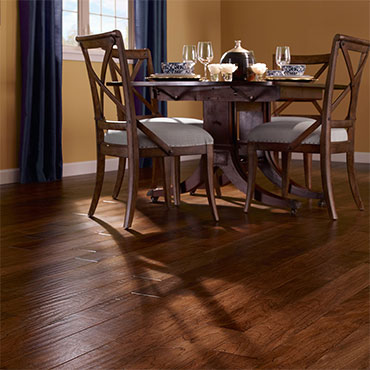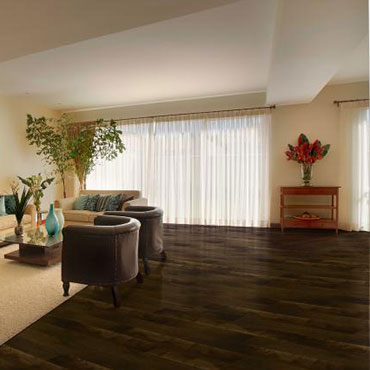Exotic Hardwood Flooring

Exotic Hardwood Flooring: A Touch of Elegance in Modern Interior Design
In the dynamic world of modern interior design, the choice of flooring plays a pivotal role in defining the aesthetic and atmosphere of a space. Among the myriad options available, exotic hardwood flooring stands out for its unparalleled elegance, durability, and unique character. This article delves into the world of exotic hardwood floors, offering insights for interior designers, decorators, and design consultants on leveraging this material to its fullest potential.
Types of Exotic Hardwood Flooring
Exotic hardwoods, often sourced from tropical regions like South America, Africa, and Southeast Asia, offer a palette of unique grains, textures, and colors. Popular choices include Brazilian Cherry (Jatoba), Tigerwood, Teak, Mahogany, and Bamboo. Each species brings its own distinct flavor; for instance, Brazilian Cherry is renowned for its deep, rich red tones, while Tigerwood is characterized by a striking blend of orange and dark vein stripes.
Versatility in Design
One of the main attractions of exotic hardwood flooring is its versatility. These woods can complement a wide range of design themes, from rustic to contemporary. Their unique patterns and colors can become a focal point in a room or harmoniously blend with the overall design scheme. Designers can play with plank sizes and layouts (like herringbone or chevron) to create bespoke patterns that enhance the visual interest of spaces.
Durability and Maintenance
Exotic hardwoods are not just about looks; they are also highly durable. Many of these woods have higher Janka hardness ratings than domestic hardwoods, making them suitable for high-traffic areas. However, it’s essential to consider the specific properties of each wood; some may be more prone to humidity and temperature changes. Maintenance generally involves regular sweeping and occasional polishing to maintain their luster.
Sustainability Concerns
The use of exotic hardwoods raises important sustainability questions. It's crucial to ensure that the wood is sourced responsibly and certified by organizations like the Forest Stewardship Council (FSC). Designers should prioritize suppliers who adhere to ethical sourcing practices, thus balancing aesthetics with environmental responsibility.
Enhancing Exterior Spaces
Interestingly, exotic hardwoods are not confined to interior spaces. Some varieties, like Teak and Ipe, are also excellent for outdoor applications like decks and
patios due to their natural resistance to moisture, decay, and insect damage. This allows for a seamless transition from indoor to outdoor spaces, creating a cohesive design language throughout the property.
S
election Tips for Design Professionals
When selecting exotic hardwood flooring, professionals should consider:
- Room Usage: High-traffic areas may require harder woods like Brazilian Walnut (Ipe).
- Color Scheme: The floor color should complement the overall palette of the room.
- Lighting: Natural light can affect the appearance of hardwood floors; some woods may darken over time.
- Grain Pattern: The uniqueness of grain can be a standout feature or a subtle backdrop.
- Finish: Options range from glossy to matte, impacting both aesthetics and maintenance.
Features and Benefits
Exotic hardwood flooring offers several benefits:
- Aesthetic Appeal: The unique colors and patterns add an exotic charm to interiors.
- Longevity: Properly maintained, these floors can last decades.
- Property Value: Homes with exotic hardwood floors often have higher market values.
- Healthier Indoor Air: Unlike carpets, hardwood floors do not harbor allergens.
Recent Trends and Innovations
The world of exotic hardwood flooring is ever-evolving, with recent trends emphasizing eco-friendly and innovative materials. For example, reclaimed hardwoods are gaining popularity, offering a sustainable and story-rich option. Additionally, advances in finishes and treatments have improved the durability and color retention of these woods, making them more adaptable to various climates and settings.
Bamboo, although technically a grass, is being used increasingly due to its rapid growth rate and sustainability. It offers a similar aesthetic to traditional hardwood but with a greener footprint.
Conclusion
Exotic hardwood flooring, with its natural beauty and enduring charm, continues to be a coveted choice in modern interior design. Its versatility and durability make it suitable for a wide range of projects, while its unique character can elevate the aesthetic of any space. For design professionals, the key lies in selecting the right type of wood and ensuring it is sourced sustainably. With thoughtful consideration, exotic hardwood floors can be both a statement of luxury and a testament to ecological responsibility, making them a win-win for designers and homeowners alike.
Disclaimer: The information provided in this article is for general informational purposes only. While we strive to ensure the accuracy and reliability of the information presented, we make no warranties, express or implied, about the completeness, accuracy, reliability, suitability, or availability with respect to the content. Any reliance you place on such information is strictly at your own risk. We recommend consulting with professionals for specific advice tailored to your project’s needs, particularly regarding building codes, regulations, and product specifications.
Under no circumstances shall we be liable for any loss or damage, including without limitation, indirect or consequential loss or damage, arising from the use of, or reliance on, the information provided in this article.







